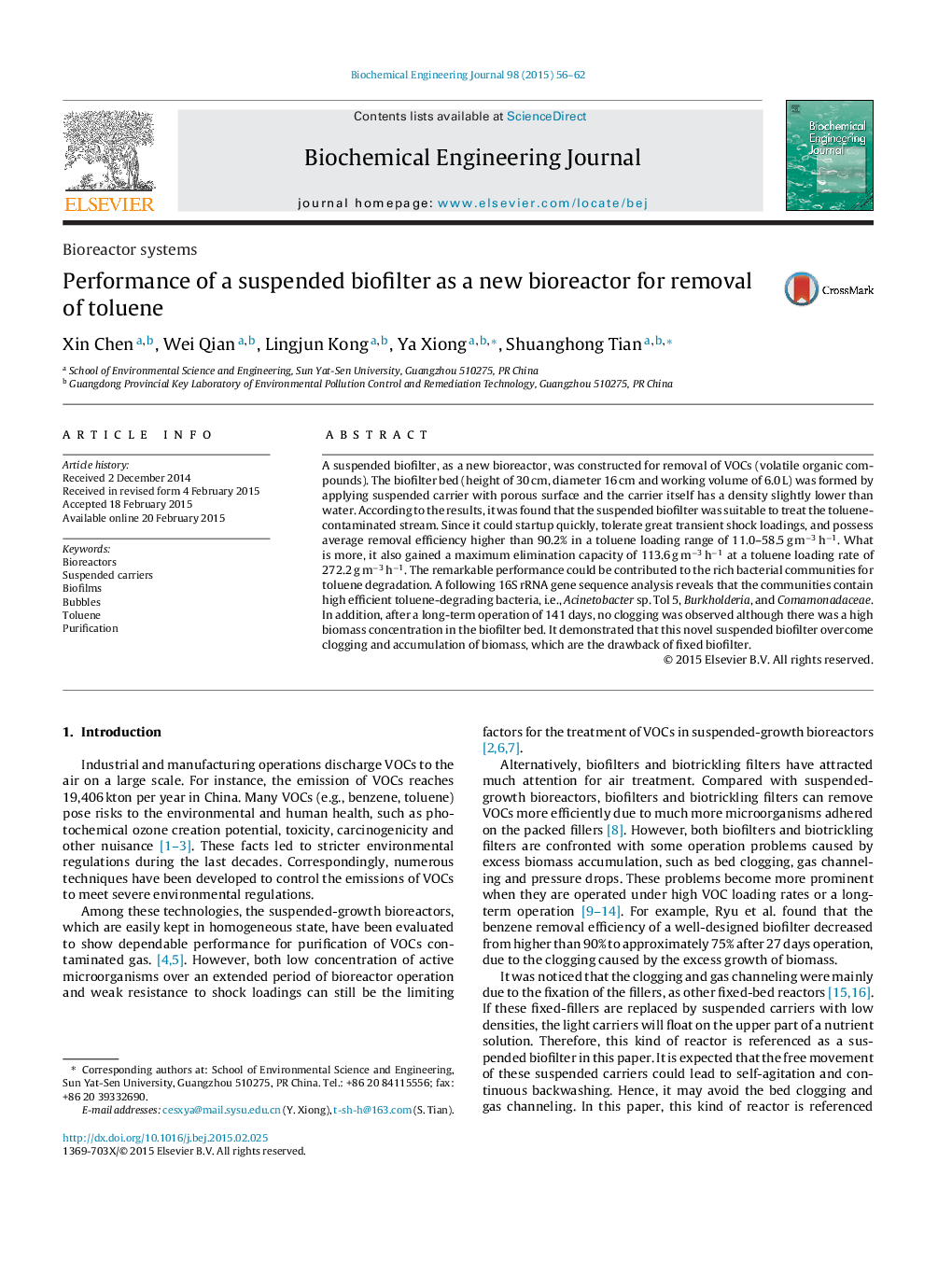| Article ID | Journal | Published Year | Pages | File Type |
|---|---|---|---|---|
| 2906 | Biochemical Engineering Journal | 2015 | 7 Pages |
•A new bioreactor, suspended biofilter, is developed to treat toluene waste gas.•It possesses quick startup, high removal efficiency and tolerance to shock loadings.•There are rich bacterial communities of toluene degrader in the biomass.•No clogging was observed in the suspended biofilter during a 141-day operation.
A suspended biofilter, as a new bioreactor, was constructed for removal of VOCs (volatile organic compounds). The biofilter bed (height of 30 cm, diameter 16 cm and working volume of 6.0 L) was formed by applying suspended carrier with porous surface and the carrier itself has a density slightly lower than water. According to the results, it was found that the suspended biofilter was suitable to treat the toluene-contaminated stream. Since it could startup quickly, tolerate great transient shock loadings, and possess average removal efficiency higher than 90.2% in a toluene loading range of 11.0–58.5 g m−3 h−1. What is more, it also gained a maximum elimination capacity of 113.6 g m−3 h−1 at a toluene loading rate of 272.2 g m−3 h−1. The remarkable performance could be contributed to the rich bacterial communities for toluene degradation. A following 16S rRNA gene sequence analysis reveals that the communities contain high efficient toluene-degrading bacteria, i.e., Acinetobacter sp. Tol 5, Burkholderia, and Comamonadaceae. In addition, after a long-term operation of 141 days, no clogging was observed although there was a high biomass concentration in the biofilter bed. It demonstrated that this novel suspended biofilter overcome clogging and accumulation of biomass, which are the drawback of fixed biofilter.
